Monitoring and Promoting Recovery Modalities – Part 2
In the previous part of this article series, I have covered works by other practitioners and experts regarding recovery actions questionnaires. In this part of the article series, I will provide the recovery questionnaire I came up with, given my own circumstances and context (as well as personal preferences).
Extensive list
To create my own Recovery Actions Questionnaire (RAQ), I started by enlisting all the major categories I wanted to cover (Figure 1), and then I populated each with actions/items I found important or found in other questionnaires mentioned so far. I will cover each category separately, before we reduce it down to something actionable (given my own context for deploying it).

Figure 1: Recovery components
Sleep & Rest
Sleep is the most important recovery strategy. Figure 2 enlist all the potential items/actions to be rated when it comes to sleep category. This is extensive list, and some of the items are already covered in our morning wellness rating (please refer to the previous part). I will start by doing a brain-dump (i.e., the reason for using MindNode mind map software in the first place), or creating an extensive list of all the important items/actions, and then I will prune it down. But we will come to that part after I cover all the categories.
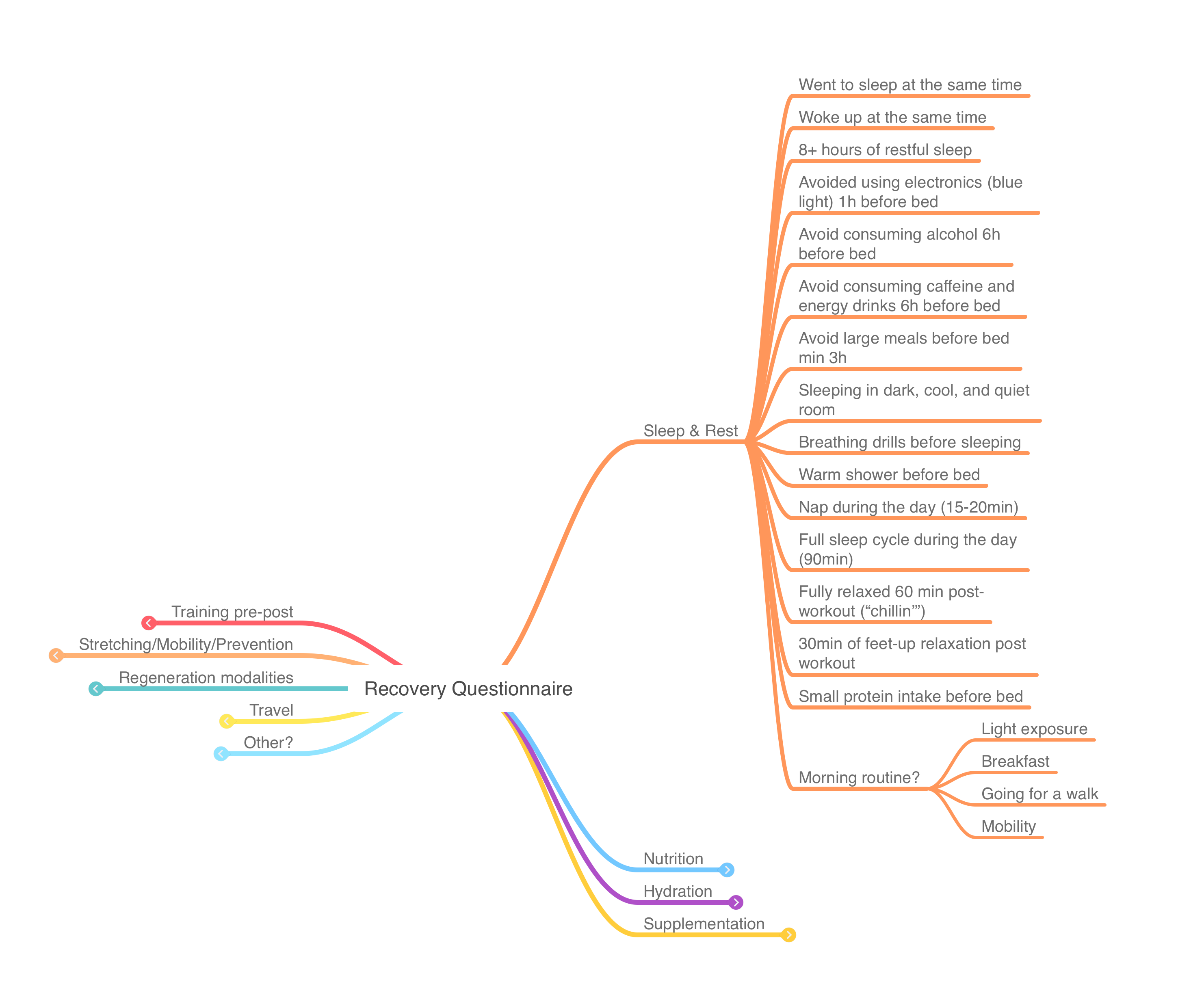
Figure 2: Sleep and Rest component
Nutrition
Next on the importance list is the nutrition category, which is depicted in Figure 3. I have decided to move peri-workout nutrition items (e.g., recovery shake) to the pre-post training category, rather than to cover it here. The nutrition category is problematic and it involves numerous actions related to nutrition itself, not directly related to recovery per se, like sticking to the nutrition program, etc. Thus, as you will soon realize, this questionnaire (as is, in this current extended form) is a combination of habits (related to recovery, but some not so) as well as recovery actions. I was thinking of “extending” this questionnaire to things of importance beyond recovery (see the “Other” category), since it will serve as habit builder tool. But at the end of the day, we cannot have 50+ items (reminders) to be rated daily by the athlete – so, I will reduce it to the bare minimum. Anyway, it can be a good starting point for someone reading this and maybe creating different questionnaire involving other habits to track.
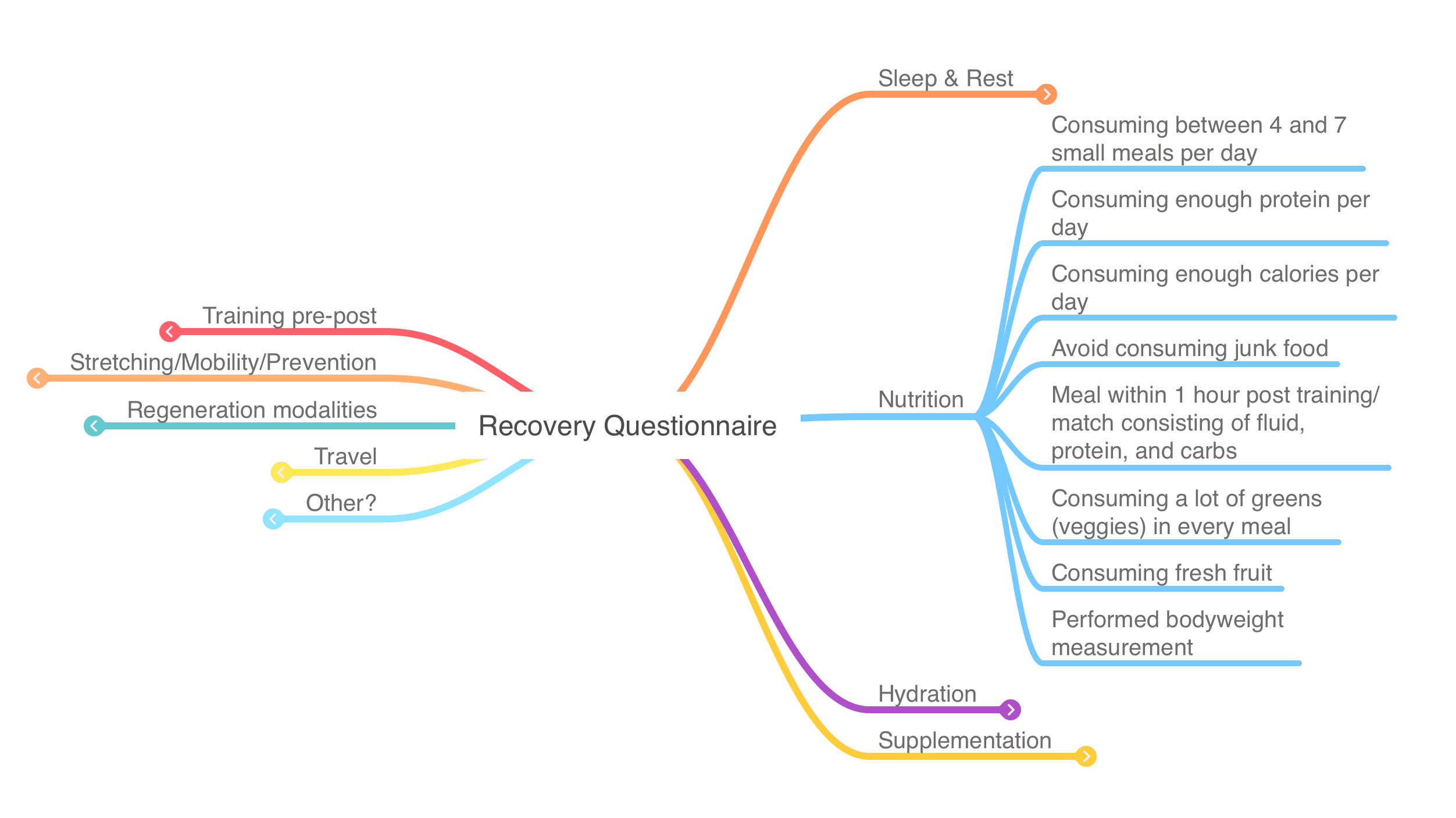
Figure 3: Nutrition component
Hydration
Items related to hydration are shown in Figure 4. Since it’s summertime in Serbia right now, tracking fluid consumption during exercise and promptly replacing lost fluid (and minerals) are crucial. Thus, Figure 4 enlists all the actions/habits related to that, although some can be moved to the pre/post training component (as we have done with some nutrition items).
Related to the last question of checking pre and post-training body weight, right off the bat, I do not remember how much weight loss is “allowed” during the hot weather and how much water/iso-tonic is needed to replenish it (i.e., how much iso-tonic fluid per weight lost). So if anyone have this info, please leave in the comments.

Figure 4: Hydration component
Supplementation
The supplementation category (Figure 5) is more difficult to navigate than the nutrition category since it includes items/actions that have unknown effects or are not directly related to recovery. Nevertheless, as we previously mentioned, I have included a few things/actions for the habit formation.
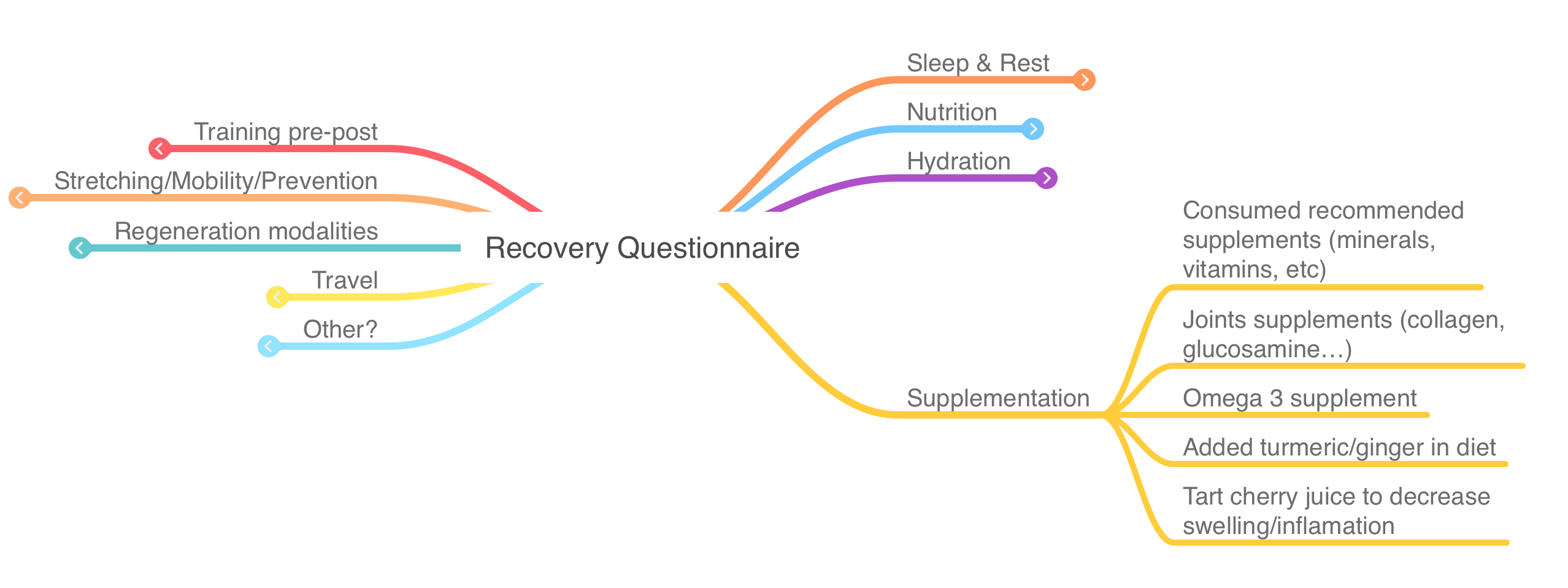
Figure 5: Supplementation component
Training pre/post activities
The training pre/post category contains almost all peri-workout activities that can help with recovery (Figure 6), as well as those that promote habit building. Some of these (for example, stretching) are also covered in the next category, however they are done freely by the athletes rather than in conjunction with their workout. In other words, it is difficult to prevent duplication of items/actions.
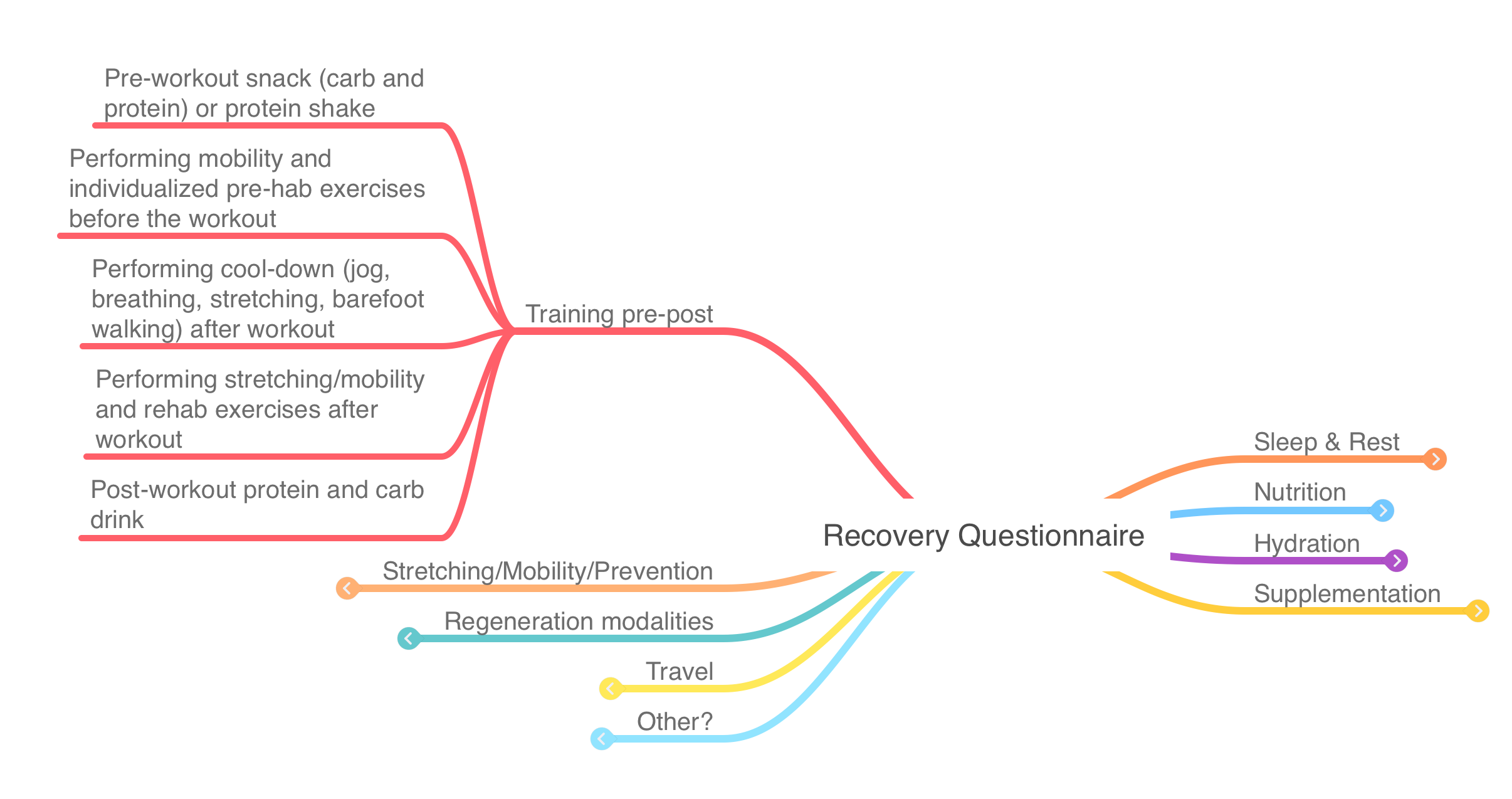
Figure 6: Training pre/post component
Stretching / Mobility / Prevention
As I grew older, I became aware of how beneficial yoga-esque mobility and stretching were for my overall health and feel-good effect. Therefore, the stretching component’s purpose is to instill in the athletes the habit of stretching and engaging in relaxing activities on their own (Figure 7). Although some of them can be done before or after a workout, there is some overlap with the training pre/post component. Nevertheless, I have included them here since they represent a stretching and relaxation session that is done outside of the training sessions.




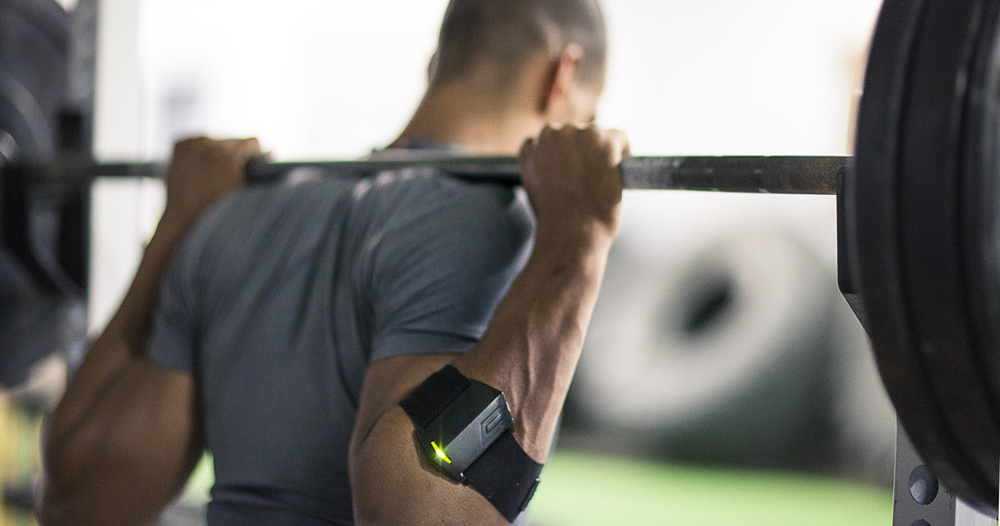






Responses